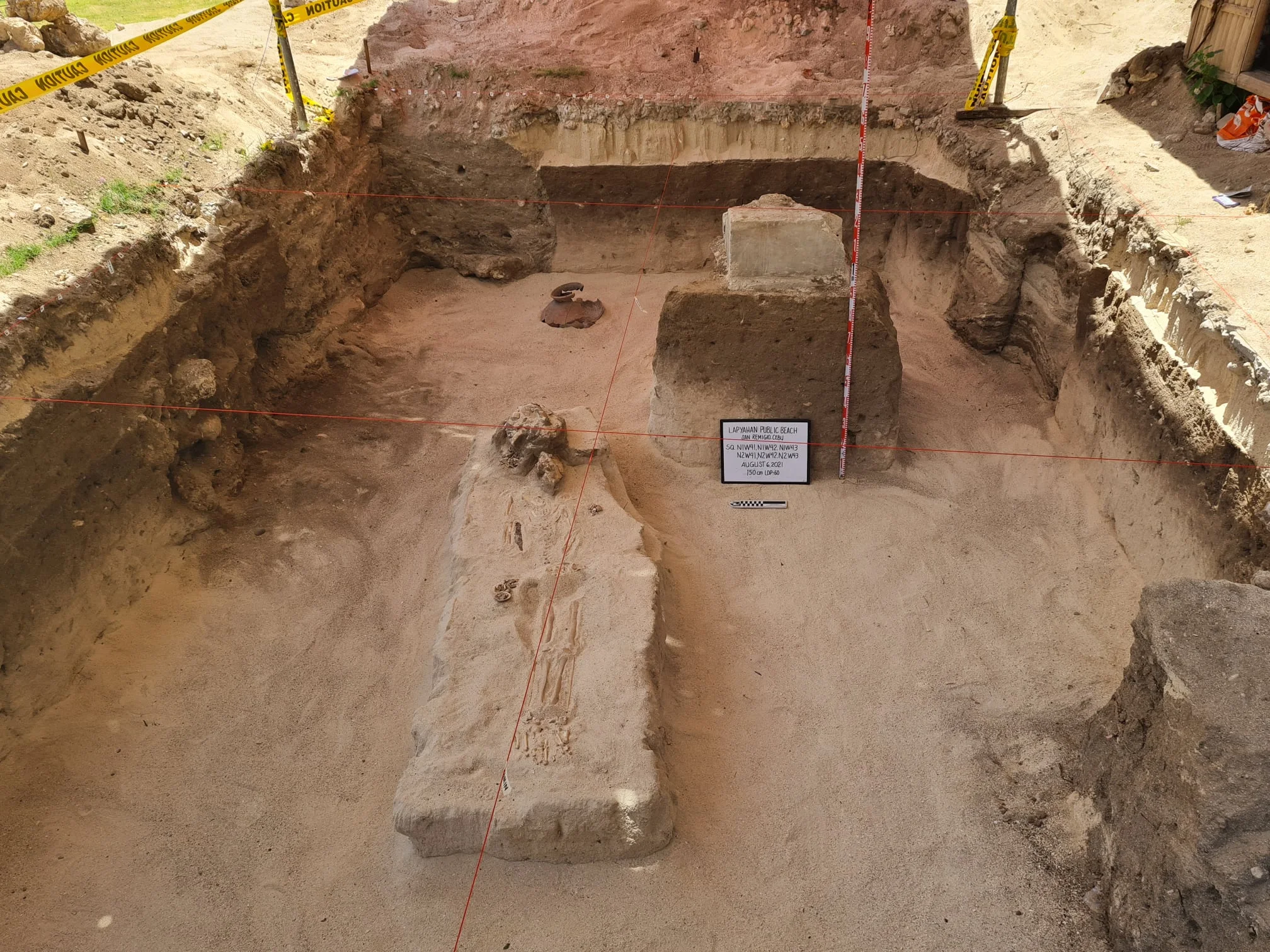Archaeological Excavations in San Remigio on the Northern Part of Cebu Island
The National Museum of the Philippines (NMP) and the University of San Carlos (USC) are currently conducting archaeological excavations in San Remigio on the northern part of Cebu Island that is funded by the Aboitiz Foundation, Inc. Referred to as the North Cebu Archaeological Project (NCAP), the San Remigio excavations began a two-year research activity that aims to obtain insight into archaeological and cultural history of Cebu. Moreover, it will be the first in systematically documenting the Metal Age in this part of the Philippines. Led by Dr. John Allen Peterson and Dr. Jose Eleazar R. Bersales, the project will be assisted by USC anthropology graduate students whose practical experience will contribute in developing new knowledge on these sites.
Previous archaeological work by the NMP and USC in 2011 and 2012 at San Remigio revealed the area served as a settlement and burial site for inhabitants of Cebu sometime during the Late Metal Age about 1500 years ago. Based on finds from past excavations, prehistoric residents of San Remigio subsisted on shell, fish and pig and utilized pottery and net sinkers. They buried their dead along with funerary offerings that included pottery, shells, and iron objects. The recent excavations are aimed to further expand understanding of prehistoric lifeways in northern Cebu. NMP researchers will support this activity remotely to observe health and travel protocols due to the pandemic, supporting the government’s efforts against COVID-19.
 |
| The 4x6-meter trench at the Lapyahan Public Beach site showing a primary burial and a large earthenware pot believed to contain a burial. |
The current excavations at San Remigio commenced last July 12, 2021, with investigations focused on two sites, the Lapyahan Public Beach Site, and the San Nepomuceno Parish Church site. Of seven excavation units opened at the Lapyahan Public Beach, archaeologists have thus far uncovered one primary burial. The corpse was laid on the ground in an extended position, with deposition conditions indicating that the body was tightly wrapped. Based on the more fragmented condition of its head and apparent separation from the rest of the body (off by about 15 cm east-northeast from the neck area), it appears that the head of the corpse was deposited separately. An iron dagger was also found on the right side of the burial near the ribs.
Adjacent to this burial, the excavation team also found a very large earthenware jar that potentially holds human remains. As the jar is still being stabilized and its contents not yet removed, confirmation on whether it does contain human remains to be determined. However, as earthenware jars containing human remains were similarly found in prior excavations at San Remigio, it would be unsurprising if this is indeed proven.
 |
| Closeup of one of five earthenware potteries associated with a burial (Burial #2) showing punctuated decoration on the neck. |
Meanwhile, excavation units at the San Juan Nepomuceno Church site have revealed six primary burials, all found in an extended supine position. The burials, except for one, are all probably adults. They are found with at least two and at most three earthenware pottery vessels that possess stylistic affinities to Kalanay Type Pottery. Kalanay pottery are Metal Age (ca. 500 BC to AD 1000) earthenware pottery with distinct forms and decoration that was first reported by Wilhelm Solheim II from his excavations in Kalanay Cave, Masbate in the 1950s.
 |
| The large earthenware pot found at the Lapyahan Public Beach Site believed to contain a burial being conserved in situ. |
Aside from the burials found at both sites in San Remigio, the archaeological team also found evidence for human settlement of the area. Primary indicators of habitation are observed in refuse deposits of edible bivalve and univalve shells (e.g., anadara and grafrarium, among others), earthenware sherds, and charcoal across excavation units. Further analysis of all archaeological material will be carried out after the excavations and bone and soil samples will be sent abroad for radiocarbon dating.
Intensive and systematic surveys of northern Cebu beyond San Remigio will also be carried out during the two-year project. Dr. Peterson is currently developing a field recording protocol using GaiaGPS to document sites in the landscape that will be incorporated in a geospatial database that will conveniently allow spatial analysis of past cultural data. Sites that are reported by local informants will also be considered for further investigation.
For queries on this project, please contact the NMP Archaeology Division’s Ms. Alexandra de Leon through communications@nationalmuseum.gov.ph. We will provide you with more updates on the NCAP as we move northwards.
____________
Credits:
Text by Alexandra de Leon, Jose Bersales and John Peterson. Photos are courtesy of NCAP.
© National Museum of the Philippines and the University of San Carlos (2021)





No comments:
Got Something to Say? Thoughts? Additional Information?